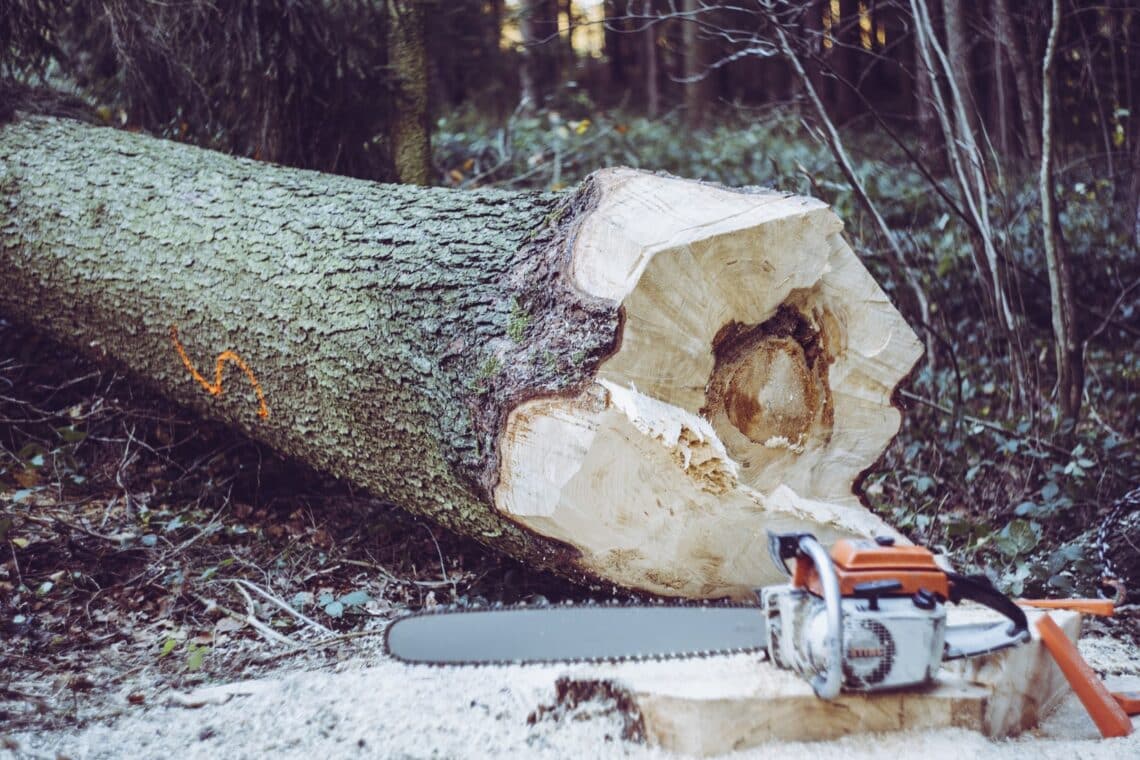Homeowners have a lot of parts and pieces to keep track of in order to keep their properties at their best. Part of this duty is maintaining not just the house itself but the land it’s on. There is, of course, lawn mowing and leaf blowing, shoveling snow and ice, trimming hedges and perhaps even gardening. These tasks are fairly easy to deal with (though perhaps not gardening for those born without a green thumb). There are, however, some bigger tasks that aren’t as easy to manage on your own. One of those tasks is removing trees from your property.
There are a few different reasons why you may want—or need—a tree removed from your property:
- If it has fallen
- If it’s diseased or already dead
- If it’s a safety hazard
- If it’s an inconvenience
How to Remove Trees Safely
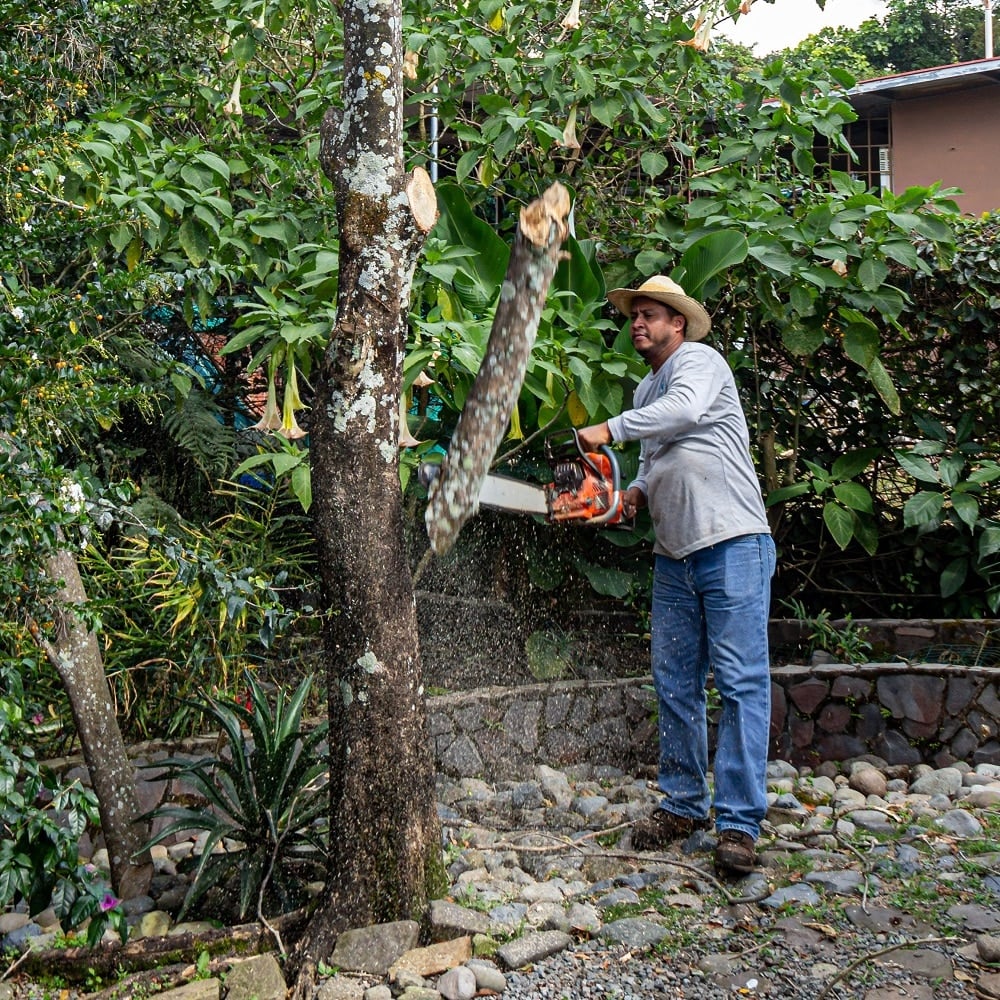
Fallen Trees
The most obvious reason to have a tree removed is if it has already fallen down—though hopefully not on your house or your car. Trees may fall due to inclement weather, such as hurricanes, tornadoes and high-speed winds, or because diseases or pests have worn away at the roots and the trunk. A tree may also fall if there has been serious erosion of the ground that the roots of the tree are set into, and the weak earth can’t keep the roots in place. On the bright side, while dealing with a fallen tree may be a pain in the immediate aftermath, it does at least mean that half of the battle is already over.
Diseased Or Dead Trees
You may want to remove a tree that is diseased or already dead while it’s still upright as a preventative measure. General wisdom dictates that it’s better to get the tree out of the way before it has an opportunity to fall over—possibly on to something important like your home or car. Now, you may be thinking: how can you tell if your tree is diseased, pest-ridden, or just completely dead? As most of us are not arborists or botanists, it can be difficult to tell, especially in the winter when most trees go dormant anyway.
Luckily, there are plenty of resources online listing tell-tale signs that your trees aren’t well. Looking at the quality of a tree’s leaves, bark, trunk and roots will give you a sense of how healthy or sick your trees are. Depending on the severity of the situation, a sick tree may not necessarily need removing. Sometimes, with some tender love and care, you can salvage a sick tree and get it back to a healthy state. This would be certainly be a cheaper alternative than full-on tree removal. In order to determine if your tree is salvageable, you should call up your local arborist to evaluate the situation and advise you on the best options moving forward.
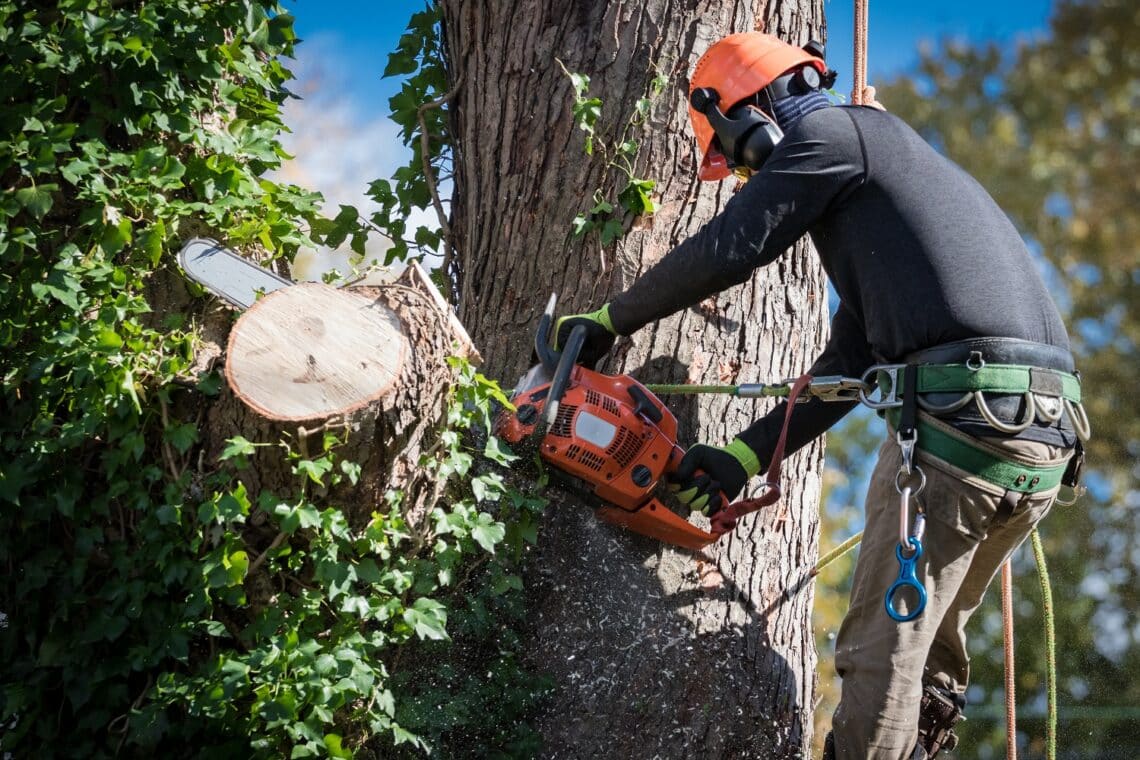
Trees In Inconvenient Spots
If your tree is deemed healthy, you may want to get rid of it anyway. There are plenty of reasons why you may need a live tree removed. Maybe it’s straddling a property line and you or your neighbor want it gone, or maybe it leaves dropped fruit all over your car and driveway. It could be blocking your windows and leaving your rooms dark. Or, maybe you’re doing some major landscaping of your whole backyard. Sometimes a tree has just got to go, healthy or otherwise.
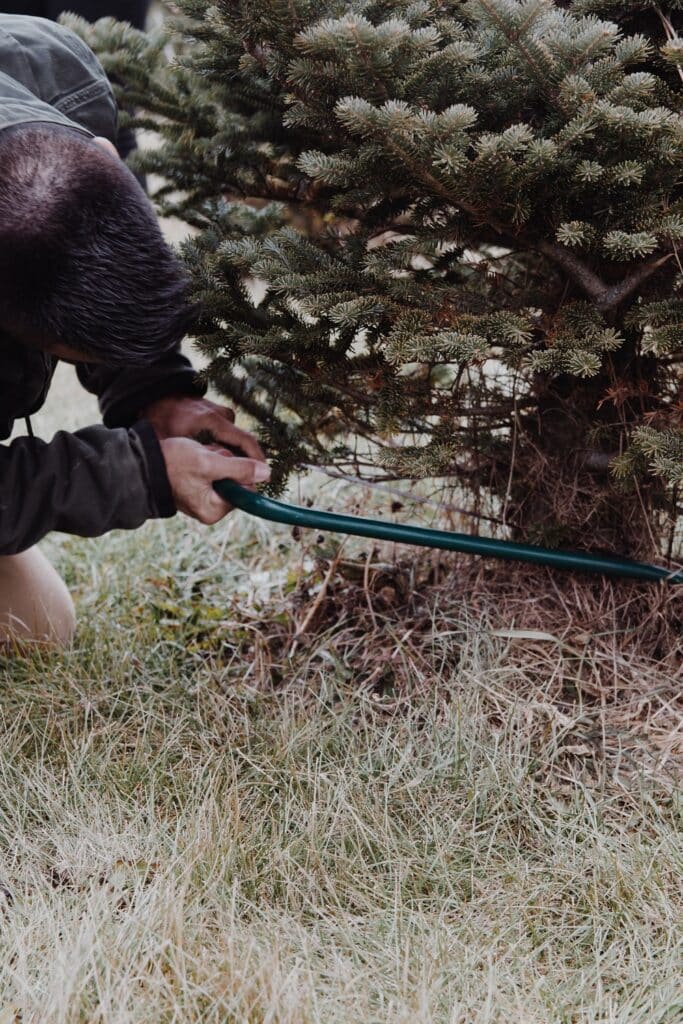
Professional Services Versus DIY
Regardless of why you need to hire a quality tree removal company, the end result is the same. You just need to safely get a big old tree off of your property. To begin with, do some research on local companies. A professional service provided by arborists and other contractors—someone trained in all things trees—will allow you to get any pesky trees out of the way without having to deal with all of the logistics on your own. Contractors should also handle disposal of the tree for you as well, so you won’t have to worry about figuring out how one even goes about getting rid of a tree.
The price range for professional tree removal varies and mostly depends on the size of the tree. The larger the tree, the more the trouble, the higher the price. Makes sense, right? Generally speaking, tree removal can range anywhere from USD$400 – $1500, though much smaller jobs may get down toward USD$200 and much larger jobs may extend beyond USD$2,000. As with most big house projects, expect to budget a fair amount of money for this kind of work. But, as is the case with any valuable service, it’s worth spending the money for the experience and skill that these kinds of contractors provide. And, again, who really wants to deal with getting rid of an entire tree on their own?
If professional removal is outside of your financial means, if you’re really into DIY, or if you just own a truck and feel ambitious enough, you may instead decide to remove the tree in question on your own. While this is certainly possible, it’s worth restating that this task requires extreme care and caution. Taking down a large and tall object can end in disaster if not enough care is taken to cut the tree, direct the fall, and measure the area where it should be falling. If you decide to remove a tree on your own, make sure you’ve got several friends to help you out and that you regularly double check each other’s work.
With that reminder, let’s talk logistics.

Steps To Remove A Tree Safely
-
Plan
The first step in removing a tree safely is planning. Examine the tree itself to see if it’s leaning (especially if it’s leaning in a direction you do not want it to fall) and check out the area around it to make sure there aren’t any obstructions that mean you absolutely cannot pull the tree down in that direction. This will also give you a better sense of whether it’s really feasible for you to get remove the tree without professional help or at least a friend or relative with experience to guide the process.
-
Get The Gear
Once you’ve planned thoroughly, you’ll need to figure out what sort of gear you need. Getting heavy duty machinery would be an expensive affair if you had to buy it outright. However, unless you plan on doing a lot of carving and chopping in the future, you’ll only need gear for the span of a few hours. Luckily, there is a much more affordable option available. Chances are, your local hardware store will offer equipment rental, so, you can pick up a chainsaw and other necessary gear for a fraction of the total cost of buying everything outright. You’ll also need to figure out a means of transporting the tree—or more likely, the pieces of the tree—to an appropriate disposal site. If you or a friend own a truck, you’re good. Otherwise, you can look into renting one of these as well.
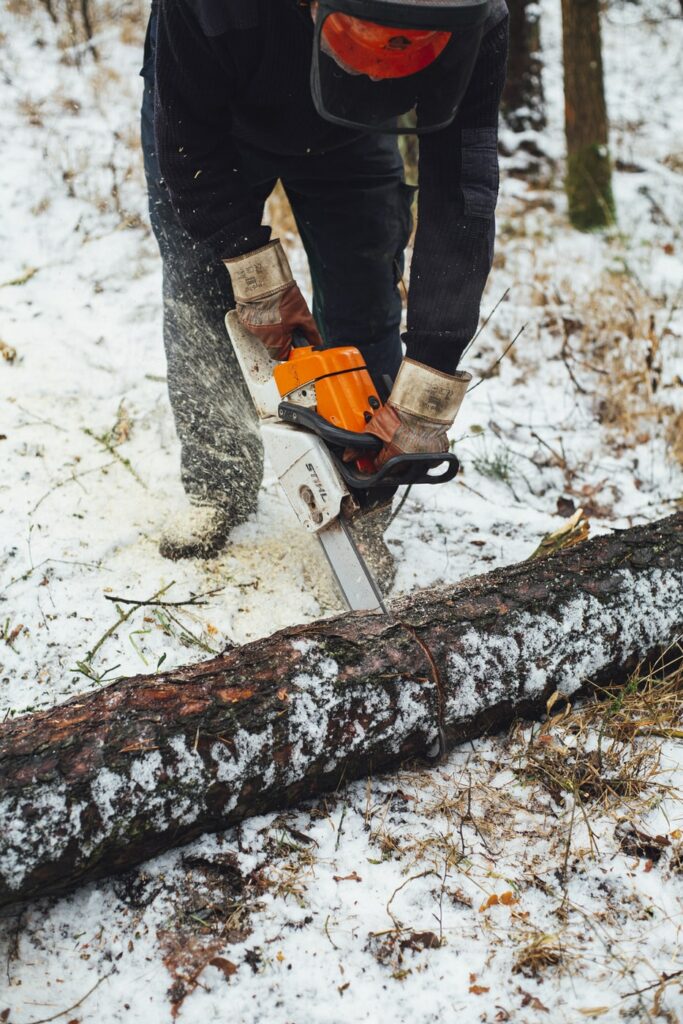
-
Remove The Tree
After you’ve allocated your resources and figured out a game plan, all that’s really left to do is the tree removal itself. Again, exercise extreme caution when doing this. If possible, you’ll want to remove any branches you can safely reach to reduce the amount of clearance you’ll need to account for when the tree comes down. You’ll also want to notch the trunk on the side you want the tree to come down on, so as to encourage it to fall in the right direction and not in a more disastrous spot.
Now, depending on whether you’re trying to pull the roots out entirely or fell it with the chainsaw, you’ll do the deed of bringing down the tree. Once it’s down, you’ll deal with either the stump—treating it with specific chemicals to break it down for easy removal later—or the roots that are left to make them easier to lift and move. And then, success! You will have removed a tree and you will owe any helpers in this project a round of pizza.
Conclusion
Life likes to throw in a few wrenches into the works every now and again, and any problem involving a tree can be quite a big wrench. Maintaining the land around your property is an important part of homeownership, so it’s best to keep yourself armed with the information you need to deal with obstacles as they come, instead of scrambling later. As with most tasks, you can DIY the whole process and channel some lumberjack energy into whatever tree ails you. There are a lot of resources out there that help make this task entirely manageable. Still, tree removal is not an easy task, and can be very dangerous if it’s done without the proper caution and preparation.
If it’s within your financial means, it’s highly recommended you contact a professional service to help you with the removal process. Contractors who provide these services have the training and experience to make it painless for all involved and without any casualties to the rest of your property. At the very least, it’s worth calling an arborist to evaluate any trees you’re considering removing. They’ll be able to tell you how safe or dangerous removing a particular tree would be, depending on factors like its condition, the terrain the tree is on, and if the tree can be saved. Once you have all of that information, you can make a more informed decision as to whether you feel confident in removing the tree on your own.
